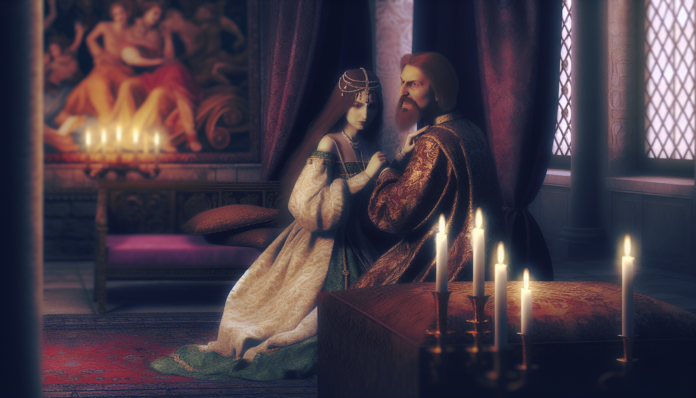Introduction
When it comes to royal love lives, few reigns resonate as much as that of King Henry VIII of England. Known for his six marriages and notorious affairs, Henry’s entanglements not only reshaped the English monarchy but also sparked significant societal changes in the 16th century. At a time when monarchical power was absolute, and the Church wielded considerable influence over personal lives, Henry’s scandals highlighted the tension between love and duty.
In the 1500s, marriage was often more about alliances and political gains than romantic love. Divorce was taboo, and the quest for a male heir drove Henry’s desperate measures, casting shadows over the sanctity of royal propriety.
The Scandal
Arguably, the most pivotal scandal of Henry VIII’s reign revolved around his affair with Anne Boleyn, who was initially one of the queen’s ladies-in-waiting. Their relationship ignited when Henry fell for her charm and ambition, leading him to seek an annulment from his first wife, Catherine of Aragon.
- Key Events:
- 1519-1525: Henry’s infatuation with Anne develops.
- 1527: Formal requests for annulment begin, ultimately leading to a rupture with the Catholic Church.
- 1533: Henry marries Anne in a secret ceremony, which provokes public outrage.
The scandal extended beyond mere infidelity; it represented a seismic shift in power dynamics. The King’s desperate need for a male heir—pushing him to marry someone he loved instead of a politically suitable partner—culminated in the English Reformation. Henry’s break from the Catholic Church not only changed religious practices but led to the rise of Protestantism in England.
Reactions from Society
Contemporary reactions were starkly divided, with nobility either staunchly supporting or vehemently opposing Henry’s actions.
- Supporters: Saw the divorce as a necessary means to an end.
- Opponents: Included devout Catholics who viewed Henry’s actions as heretical.
One influential voice, Sir Thomas More, famously criticized Henry’s marriage to Anne, equating it to a “toffee-pull,” arguing it lacked substance. In contrast, public sentiment saw Anne both as a heroine and a harlot, illustrating the era’s conflicted views on women in power.
Moral and Cultural Analysis
The consequences of Henry’s actions were immediate and far-reaching. Anne was eventually executed on charges of treason in 1536, with many viewing this as a direct result of her inability to produce a male heir. This represented not just a personal failure but also the perilous intersection of love and political ambition.
Fast forward to today, Henry’s story would likely be framed differently. In a modern context, his affairs could spark intense media scrutiny and public debate around issues of fidelity, gender roles, and power dynamics within institutions.
- Modern Commentary:
- Public relations would dictate a careful navigation of scandal, possibly framing Henry as a misunderstood romantic.
- The backlash against infidelity could lead to significant personal and political consequences, similar to contemporary celebrity scandals.
Societal norms have shifted dramatically; love is now often seen as a natural, personal choice rather than a political mandate. Henry’s narrative serves as a lens to contrast past moral expectations with today’s values surrounding relationships, fidelity, and personal happiness.
In a contemporary lens, the story raises questions: Would Henry’s quest for personal happiness justify his drastic measures? How would social media amplify or alter public perception of such a notorious romance?

